If you want to classify, the first is to sort by bit, 8 bits, 16 bits, 32 bits. According to the kernel: The first major category is the 51 core, Intel's open microcontroller core, which can be produced by various families. Now Philips, Infineon, Atmel, Maxim, etc. have this series. Moreover, high-performance and USB extensions such as EZ-USB and C8051F use such cores. The most commonly used basic models are Atmel's 89C51, 89C52, 89S51, 89S52, and a simplified version of 89C2051. The second major category, the AVR core, is the high-speed microcontroller core that Atmel itself purchased. It can complete one instruction per cycle (two cycles of division), up to 16-20MHz. Small are ATTiny12, 16, 26, etc., medium-sized ATMega8, ATMega16 up to ATMega256. The third category, PIC series, such as PIC12F, 16F, 18F and other series. Features high reliability, simple instruction set, fixed-length instruction set, complete one instruction in 4 cycles. There are also 16-bit, the most typical is TI's MSP430 series. The model is not very clear. The 32-bit one looks at the ARM core. There are also various types of DSPs that can also be used as 32-bit microcontrollers. 1. No on-chip program memory This type of microcontroller has no on-chip program memory and must be connected to external memory, such as Intel's 8031. 2. MASK (mask) ROM is a one-time curing of the program by the device manufacturer when designing the integrated circuit. It is inexpensive and suitable for applications with fixed programs and large-volume production. 3. OTP (-secondary programmable) ROM The program can be written to the microcontroller at one time and cannot be changed, and the cost is low. Suitable for applications that require flexibility and low cost, especially for electronic products that require continuous refurbishment and require rapid mass production. 4. UV erasable EPROM The surface of the MCU has a transparent window. After a certain amount of ultraviolet radiation, all the information in the memory can be cleared. The user can conveniently write the program. After the error, it can be erased and modified by ultraviolet rays, which is suitable for small batch production. 5. FLASH ROM Flash ROM is also called flash memory, which is called flash memory. This Flash is not an animated flash. It is an electrically erasable memory that can be quickly written and erased. Then it is equivalent to ordinary rewritable memory EEPROM. what differences are there? The electric erasing of the EEPROM is to achieve content erasing by adding a certain voltage, and its disadvantage is that the size of the unit memory unit is large. In the 1980s, the Flash ROM was invented. The name Flash is derived from the fact that the memory can erase all the contents in a single step. This memory can only delete the whole piece or an area and cannot be single. Byte deletion, which also reduces the size of the unit, facilitates large-area integration, so it is well applied on the microcontroller. Programs that use flash microcontrollers can be erased repeatedly, with great flexibility, but at a higher price, suitable for price-insensitive applications or for development purposes. 1. General purpose / special type This is differentiated according to the scope of application of the microcontroller. For example, the 80C51 is a general-purpose single-chip microcomputer, which is not designed for a specific purpose; the special-purpose single-chip microcomputer is designed and manufactured for a class of products or even a certain product, for example, to meet the requirements of the electronic thermometer, integrate the ADC interface and other functions on the chip. Temperature measurement control circuit, single-chip circuit in digital camera, etc. 2. Control type / home appliance type This is based on the general application of the microcontroller. Generally speaking, the industrial control type has a large range of addressing and strong computing power; the single-chip microcomputer used for home appliances is mostly dedicated, usually small package, low price, and high integration of peripheral devices and peripheral interfaces. Of course, the above classification is not unique and strict. For example, the 80C51 type MCU is both general-purpose and industrially controllable. This classification method is classified according to the architecture of the single-chip microcomputer. The following is a classification of some mainstream products of the company. Despite the wide variety of microcontrollers, the most widely used ones are the MCS-51 series. This series of microcontrollers use Intel's core technology, they are MCS-51 compatible, software compatible, development tools compatible, and pin compatible. They all support the same programming environment Keil μVision3. So classify them as the same type. The following are some of the corresponding mainstream products of each company. Intel Corporation 8051 series MCU Intel Corporation is the founder of MCS-51 series MCU. It has a very important position in MCU products and has made outstanding contributions to the development of MCS-51 series MCU. The hardware structure of MCS-51 series MCU is reasonable, the instruction system is standardized, and the production history is long, and there are advantages of ancestors. There are many well-known chip companies in the world who have purchased the core patent technology of 51 chips, and on the basis of the performance expansion, the chip has been further improved, forming a huge system. The MCS-51 core has actually become the standard for an 8-bit microcontroller. One of the advantages of the 51 series is that it has a complete bit-wise operating system, called a bit processor, or a Boolean processor, from internal hardware to software. Its processing object is not a word or a byte, but a bit. It can not only process certain bits of some special function registers in the chip, such as transfer, set, clear, test, etc., but also perform bit logic operations. Its function is very complete and easy to use. Although other types of microcontrollers also have bit processing functions, it is rare to be able to perform bit logic operations. The AT89 series MCU has the following obvious advantages for the average user: (1) The internal Flash memory is very easy to modify the program during system development, which can greatly shorten the development time of the system. (2) It is pin compatible with MCS-51 series MCU, and can be directly replaced. (3) The AT89 series does not have a simple inheritance of the 80C31, and its functions are further enhanced. In China, such single-chip microcomputers have been widely favored, and many users who used 80C51 and 80C52 have switched to the AT89 series. For users with rich programming experience, you don't need an emulator. You can directly burn the program into the chip, put it on the target board and run it directly, observe the running result, modify it when there is a problem, and then re-program the program. Experiment again until success. The AT89 series consists of two major categories, the first one is conventional, which is the AT89C series. These microcontrollers must be programmed with conventional parallel methods and must be programmed with a programmer. The second type is programmable in the system (ie, the chip is mounted on the board). After that, don't use it. Take it down and directly write the program inside.) ISPFlash series, which is AT89S series. In addition to programming with conventional parallel method, this type of MCU can also be programmed in the system with download line, eliminating the need for more expensive programming. And you can modify the program directly on the target board. The commonly used AT89 series MCU selection table is shown in the table below. The WDT in the table is the abbreviation of Watchdog Timer, which is the watchdog timer, commonly known as the watchdog. Because the work of the MCU is often subject to interference from external electromagnetic fields, causing the program to run away, and falling into an infinite loop, the normal operation of the program is interrupted, and the system controlled by the MCU cannot continue to work. The function of the watchdog is whenever it occurs. In these cases, a reset signal is generated to the microcontroller, causing the program to return to the starting point. Avoid the stagnation of the entire system with unpredictable consequences. Since AT89C51 and AT89C52 have been discontinued, the most widely used models of AT89 series MCUs are AT89C2051, AT89S51, AT89S52 and so on. Because AT89S series MCU supports ISP programming, AT89S51. AT89S52 can use the download line to program, the download line is connected to the parallel port of the computer, and the other end is connected to the target board, MOSI, MISO, SCK, RST and MCU respectively. P1.5, P1.6, and 9 pins are connected, and the power and ground are also connected separately. Turn on the power of the target board, and then run a PC software Easy 51Pro v2.0 on the computer, and write the compiled target file to program the program on the MCU. The circuit diagram and the physical object of the download line are shown in the figure below. The MCUs produced by Philips are all compatible MCUs of the MCS-51 series. They can be divided into two categories from the core structure: 16-bit XA series and 80C51 compatible series. Among them, the 80C51 compatible series of single-chip microcomputers is the most famous. The following is the series of products. Philips has developed a number of derivative devices based on the 80C51 core architecture, hundreds of models to meet different applications. Many of these products have been improved and enhanced in various ways such as memory, timer/counter, input/output port, interrupt, serial port, etc. Some models have also added new interfaces such as IIC and A/D conversion. New peripherals such as PWM outputs. This allows users to always find the model that suits their needs. It can be said that Philips has also made great contributions to the long-lasting success of the MCS-51 microcontroller. Philips 80C51 compatible series of microcontrollers can be divided into two categories from the core structure, namely 6 clock core class and 12 clock core class. We know that the standard MCS-51 microcontroller includes 12 clock cycles per machine cycle. The so-called 6-clock core means that each machine cycle of the microcontroller includes 6 clock cycles, so at the same clock frequency, the 6-clock core is used. The microcontroller runs faster. Many of the 6-clock core microcontrollers can also be set to work in 12-clock mode via software, which increases the flexibility of use. Philips 80C51 compatible series of MCUs also have many unique features, such as P87C51, P89C51 are enhanced 80C51 series MCU, while the same category of AT89S51, W78E51 and other MCUs belong to MCS-51 series MCU, although the two are fully compatible In contrast, the AT89S51 and W78E51 have only two timers/counters. Taiwan's Winbond (Winbond) is a semiconductor company with a high reputation in the world. Its MCS-51 series compatible MCUs are unique. Although the original MCS-51 series MCU has a long history and is widely used, there are many improvements, such as running too slow. When the crystal frequency is 12MHz, the machine cycle is 1μs, which obviously cannot meet the needs of high-speed operation. Winbond has contributed to improving the speed of the MCS-51 series of microcontrollers. The product models are W77 and W78 series 8-bit single-chip microcomputers. The W77 and W78 series pins and instruction sets are compatible with 805 1 , and the W78 series is fully compatible with the AT89C series. The W77 series is enhanced, and the original 805 1 timing has been improved. 'Each machine cycle is changed from 12 clock cycles to 4 clock cycles, which triples the speed. At the same time, the crystal frequency can be up to 40MHz. . The W77 series also adds a variety of functions such as Watchdog WatchDog, two sets of UARTs, two sets of DPTR data pointers, and ISP. STC's cost-effective STC89 series MCUs have added a lot of new features and improved the performance of 51 MCUs. STC89 series MCU is a derivative of MCS-51 series MCU. They are fully compatible with standard 8052 microcontrollers in instruction systems, hardware architecture and on-chip resources. The DIP40 package family is pin compatible with the 8051. STC89 series MCU high speed (maximum clock frequency 90MHz), low power consumption, in system / in-application programmable (ISP / IAP), does not account for user resources. The main features of STC89 series MCU: · 80C51 core processor unit; · 3V/5V working voltage, working frequency 0 ~ 33MHz / 0 ~ 40MHz · Large capacity internal data RAM: 1KBRAM · 64/32/16/8KB on-chip Flash program memory, with programmable in the application (IAP), in System Programmable (ISP), enables remote software upgrades without the need for a programmer • Supports 12 clocks (default) or 6 clock modes • Dual DPTR data pointers; SPI (serial peripheral interface) and enhanced serial port UART · PCA (programmable counter array) with PWM capture/compare function · 4 8-bit I/O ports, including 3 high-current Pl ports, can directly drive LEDs · 3 16-bit timers/counters · Programmable Watchdog Timer (WDT) ·Low EMI mode (ALE prohibited) · Compatible with TTL and COMS logic levels · Power failure detection and low power mode, etc. STC89 series MCUs have 64/32/16/8KB on-chip Flash according to chip models, which are divided into 2 Flash memory blocks: BLOCk0 and Blockl. Two Flash memory blocks have Block0 in the physical structure and Blockl in the back. The Flash memory block can be relocated by the REMAP (Address Reset) function. STC89 series MCU ISP and general MCS-51 series MCU, such as AT89S series ISP are different. ISP is mainly used for online (or remote) upgrades, by rewriting the user program by executing the ISP boot code, without the need for a programmer, without having to visit the site. When the STC89 series MCU is shipped from the factory, the ISP boot code has been programmed on the chip, occupying 2KB of the program space of Blockl and set to start from Blockl. When starting, first execute the ISP boot code to confirm whether the program is downloaded or started normally. Whether it is program download or normal startup, the ISP boot code will always cancel REMAP, restore Block0 in the first 8KB address space, and then execute the user program in Block0, that is, the user program is always placed in the unit starting from 00H of Block0, unless The user has modified the ISP boot code. The IAP function is programmable in the application. With this function, the single-chip microcomputer without EEPROM can have the function equivalent to EEPROM, and the storage space is much larger than the EEPROM. IAP can't program its own block, that is, when the program runs in Block0, it can be programmed as Blockl. When the program runs in Block1, it can be programmed as Block0. According to this feature, the size of the Flash programmed in the application can be set by the REMAP function. For the STV89C58: (1) When the program runs on Block0, it can have 6KB ~ 8KB Flash ROM (used); (2) When the program runs in Blockl, there can be nearly 32KB Flash ROM (requires skill or change ISP boot code) ). The selection table of STC89 series MCU (STC89C51RC/RD+) is shown in Table 13. SST89 series MCU is a high reliability, small sector structure Flash MCU introduced by SST Company of the United States. In particular, all products have IAP (Programmable in Application) and ISP (Programmable in System) functions, which do not occupy user resources. The serial port can be simulated and programmed in the system. It does not require special simulation development equipment, 3V ~ 5V working voltage, low price, and has a strong advantage in the market competition. The SST89 series of flash memory uses SST's proprietary patented CMOS SuperFlash EEPROM technology. The internal flash erasing times are more than 10,000 times, and the program save time can reach 100 years. The on-chip SuperFlash memory is divided into two separate program memory blocks. The main SuperFlash memory block 0 (Block0) is 64 KB/32 KB in size, and the memory block 1 (Blockl) is 8 KB in size. The 8KB from the memory block can be mapped to the lowest bit position of the 64KB/32KB address space; it can also be hidden from the program counter and mapped to the data space as a separate EEPROM data memory. One of the better aspects of the SST MCU is that it has the SOFtICE (Software In Circuit Emulator) online emulation function. It only needs to occupy the serial port of the MCU to realize the real-time online emulation function under Keil, and also realize the ISP online programming function. SST provides simulation monitoring programs for some SST89 series MCUs. It is possible to implement the simulation function by solidifying the simulation monitoring program into Blockl of the internal Flash memory of the MCU. Therefore, we use a SST89 series MCU chip, such as SST89C58 or SST89E564RD/516RD, plus a serial port level conversion circuit to make a 51 MCU emulator. Main features of SST89 series Flash MCU: Large-capacity internal data RAM, 1KB RAM. • Programmable (IAP) and In-System Programmable (ISP) for remote life without the need for a programmer. • Non-volatile data storage (internal expansion 4KB/8KB EEPROM). · Double Data Pointer (DPTR) structure, which is very convenient for addressing and looking up the table. • 9 interrupt sources, 4 levels of interrupt priority, and 3 high current drive pins (which can directly drive LEDs). Double-speed, 6-clock mode, selectable during programming, defaults to 12-clock mode. · Programmable Counter Array (PCA, PWM), 5 channels. Enhanced Universal Asynchronous Communication Bus UART, supporting automatic address recognition and frame data error detection. • Watchdog Timer (WDT). Wide operating voltage range of 2.7V to 5.5V, low power consumption, power consumption of only 2.5mA (89V564RD) at 12MHz clock. · Power-down detection function, 5V type generates reset at voltage 3.85V~4.15V, and 3V type voltage is low to 2.25V~2.55V to generate reset. The default is low voltage reset, and can also be set as low voltage interrupt. Fully compatible with 8051 series microcontrollers. Atmel's MCU products mainly include AT89, AVR, and ARM series. AT89 has been discussed before. The ARM series is a 32-bit MCU. The following mainly discusses the AVR series of single-chip microcomputers. In order to reduce the power consumption and improve the anti-interference performance, the early MCU adopted a relatively stable solution in order to meet the requirements of the complex instruction set CISC for the MCU timing: using a higher frequency division coefficient for the clock. The frequency makes the instruction cycle long and the execution speed is slow. Later, some CMOS microcontrollers have adopted measures such as increasing the clock frequency and reducing the division factor, but this state has not been completely changed. Although some RISC microcontrollers have been introduced here, they still follow the practice of dividing the clock. In 1997, Mr. A and Mr. V of Atmel's Norwegian Design Center, in consideration of market demand, introduced a new configuration of the reduced instruction set RISC built-in Flash high-speed 8-bit microcontroller, referred to as AVR. The biggest feature of the AVR microcontroller is that it does not divide the external clock and executes one instruction in one clock cycle. Since the AVR microcontroller abolishes the machine cycle, the reduced instruction set is used, and bytes are used as the instruction length unit. Most single-cycle instructions arrange the operands and opcodes in one byte, take a short instruction cycle, and prefetch instructions. The pipeline operation is realized, so the execution speed of the single chip microcomputer is fast. The fast access register of the AVR microcontroller consists of 32 general-purpose registers, all of which are directly connected to the arithmetic logic unit (ALU). Each register can be used instead of the accumulator. Equivalent to 32 overpasses, which can be quickly passed. Thus, the bottleneck effect of data transmission between the accumulator and the memory caused by the conventional accumulator structure is avoided, and the instruction execution speed (lMips/MHz) is improved, thereby improving system performance. Therefore, AVR single-chip microcomputer is a cost-effective single-chip microcomputer, which has been widely used in military, industrial, household appliances, smart toys, portable intelligent instruments and robots, etc., which greatly improves product function, accuracy and quality, and has simple circuit and failure rate. Low, high reliability and low cost. AVR microcontroller development tools commonly used are AVR-Studio and ICC-AVR, the former only supports assembly development and debugging, the latter is C compiler. AVR microcontroller supports ISP download, the above figure is the download line circuit, the host computer software can use PonyProg2000. Motorola microcontroller Motorola is the world's largest microcontroller manufacturer. Starting from the M6800, a wide variety of products have been developed. The 4-bit, 8-bit, 16-bit, and 32-bit MCUs can be produced. The typical representatives of the 8-bit machines are: M68HC05 and M68HC08 series. One of the characteristics of the Motorola MCU is that the clock frequency used at the same speed is much lower than that of the Intel-based MCU, which makes the high-frequency noise low and strong anti-interference ability, and is more suitable for the industrial control field and the harsh environment. AC (Alternating Current) Power cord is to transmit high voltage. It is used to drive machinery or home appliances. Since AC Power Cord is output of high voltage electric power, there is a risk of electric shock injury, therefore, All the AC power cord must comply with safety standard to produce. DC (direct Current) power cord is used to the applicance with lower voltage mostly, so safety requirement is less stringent. Power Cable, battery cable, DC power cable, AC power cable, power cord ETOP WIREHARNESS LIMITED , https://www.wireharness-assembling.com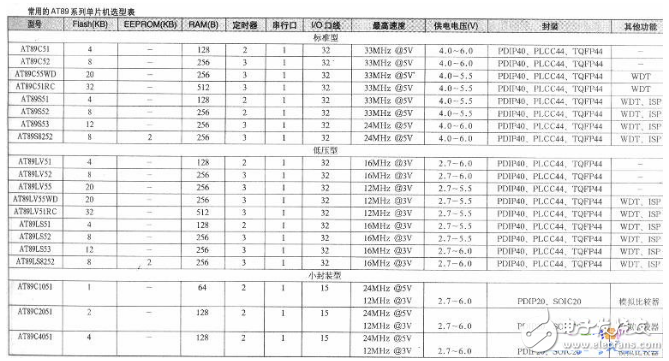
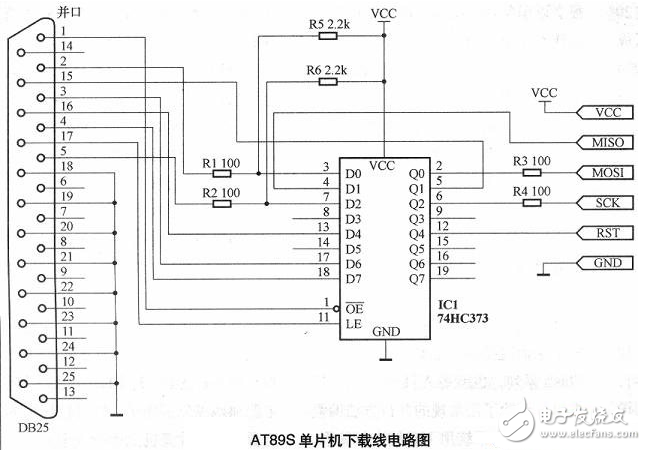
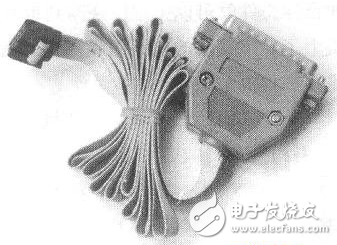
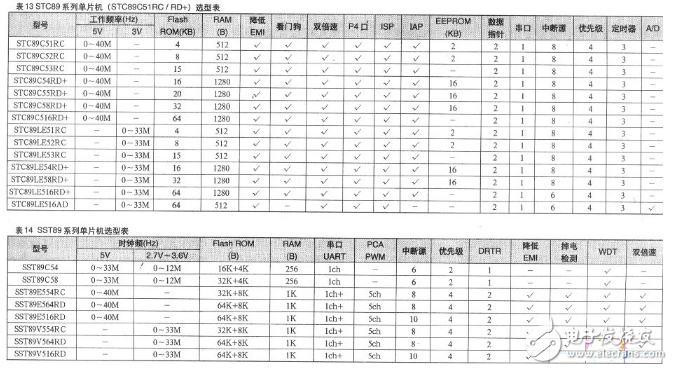
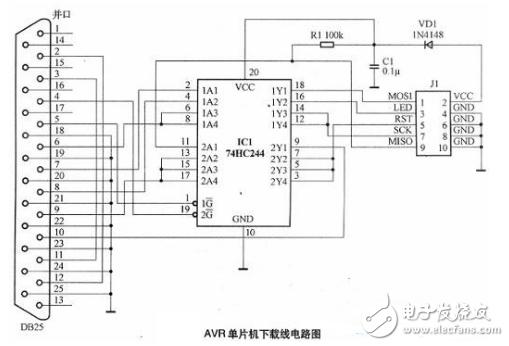
What are the models of the MCU?